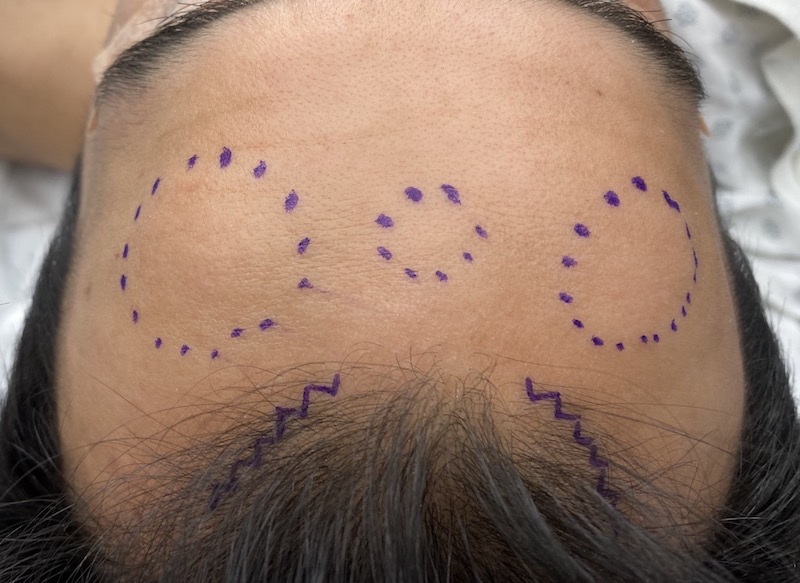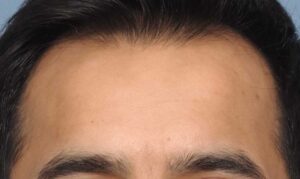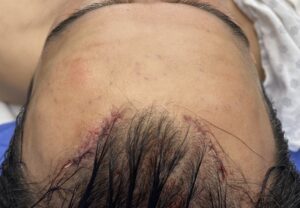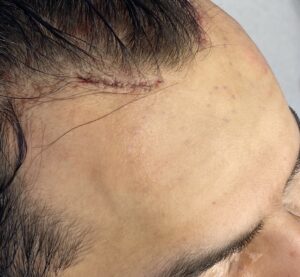Background: The forehead is prone to contour irregularities from depressions to protrusions. In the upper forehead the most common contour deformity is that of forehead horns. It has this name because it typically occurs as paired circular protrusions. Their origins are developmental as the forehead develops from a pair of frontal eminences (tuber frontale) which are rounded elevations several centimeters above the brow bone area. Why they occur in some people and not others is not known. They seem to occur more frequently in males but that perception is based solely on my experience as men are who most frequently present for surgical removal.
While forehead horns are typically paired they are often not symmetric. One horn is often bigger than the other one and there may also be a much smaller central horn as well. In some cases they can be a raised ridge of bone that connects the lateral horns. (looks like a dogbone)
For surgical reduction of forehead horns the most important issue is surgical access. To keep the incisions small they need to be close to the upper forehead, either at the edge of the frontal hairline or just behind it. It is important to keep the incisions small and have them as imperceptible as possible as one does not want to trade off one aesthetic problem for another.
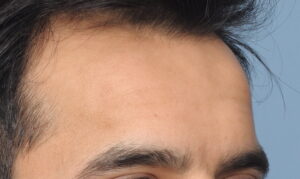
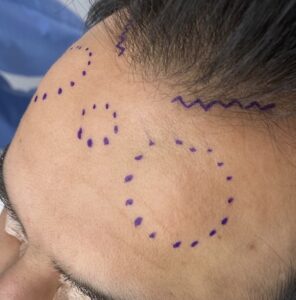

Case Highlights:
1) Forehead horns of the upper forehead can occur as one two or three bumps which may also be different in sizes.
2) These forehead prominences can be successfully reduced by burring and large-toothed rasps through small anterior scalp incisions.
3) In men the lateral forehead horns should not be over reduced to prevent rounding of the upper forehead.
Dr. Barry Eppley
Indianapolis, Indiana

